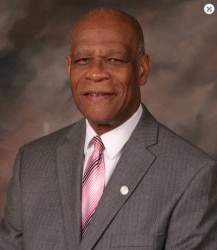“And Jesus increased in wisdom and stature and in favor with God and man” (Luke 2:52)
It’s a young New Year. We face the winds of health, economic, financial, and political crises. The disciples in the time of Jesus faced similar crises–ego status identity (Pharisees, publicans, and sinners), spiritual formation, occupational-vocational identity (fishermen, tanners, persons born with defects), ethnic bias among Greeks, Jews, and Samaritans (racial identity), and the psycho-social challenges of defining who they were really were.
In this milieu, they were called into leadership training for eventual apostleship as teachers and then to servant leadership. It was a three-phased developmental process of overlapping stages with a servant leadership theme pervading and transcending the entire process:
Stage 1—Discipleship (Students): The curriculum consists of followership and mentorship.
Stage 2—Apostleship (Teachers): The disciple becomes the teacher via internships.
Stage 3—Servant Leadership (Leaders): Consists of all previous stages with the realization that the leader is the servant of the people, the highest form of customer service and branding.
Leadership identity formation calls into focus several theoretical models. Each theory proposed stages or crises or phases that lead from the simple to the complex–Piaget (1896-1980) proposed stages in cognitive development; Kohlberg (1958) posited stages in moral reasoning of right and wrong; Erik Erikson (1958, 1968) established a psycho-social theory over the entire human lifespan, which laid the basis for further theory development in the work of James Marcia (1993), who spelled out areas of ego development. Other growth areas are race-ethnicity (Cross, 1971 and Helms, 1995), occupational development (Holland, 1993), and Lacy (2012) who proposed a relationship between identity formation and faith maturity.
When youth are able to insert faith maturity processes into all other areas, then development is at its optimum. Faith maturity development remains the significant factor that lends color and robustness to the mix. It is critical that students be in an environment where this brew can consciously and deliberately be fostered. We are mentors at church, school, and home to provide leadership opportunities in Pathfinders, Adventist Youth, Junior Church, Sabbath School and then the Adventist schoolhouse to pull together all the elements. It is the inspiring element of faith development that energizes the whole. This then is the distinguishing and differentiating essence of Christian Seventh-day Adventist education. A strong faith augurs well for the future with the added dimension of digital identity development, required preparation for all who will serve.
The challenge of an increasingly virtual world calls for a mix of the digital, cognitive, and the practical. Adventist education must now unfold a new paradigm to swallow this opportunity, for the deadly virus, even if it goes into hiding, is still present. Cocoon the virus, minimize its risk, and add health identity development to the mix. Opportunities for faith maturity over the church lifespan represent the essence of the mix to integrate discipleship, apostleship, and servant leadership.

